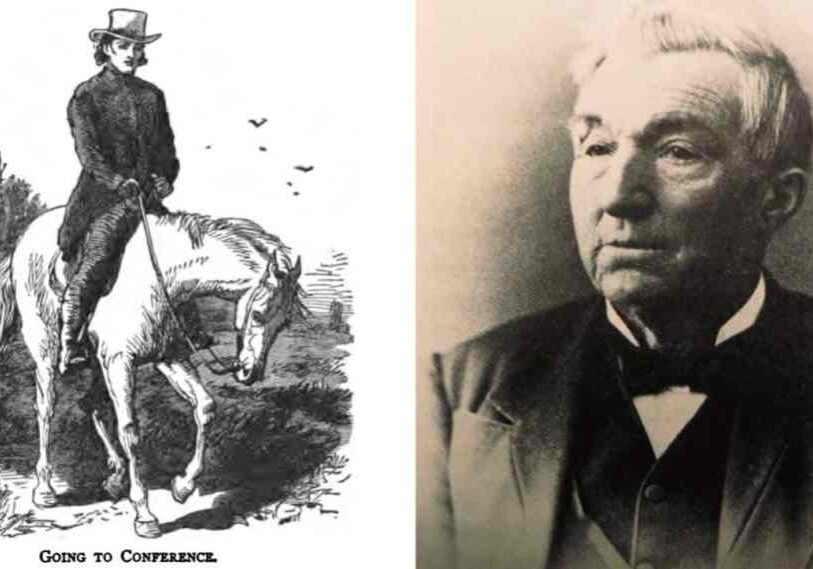Passing on the Farm

Editor’s UPDATE (September, 2023): Root River Current’s “Passing on the Farm” story is one of several included in “Preserving Farmland for a Resilient Future”—an exhibition presented at the 2023 Minnesota State Fair by Renewing the Countryside (RTC), a southeast Minnesota organization working on issues and solutions around farmland preservation and resilience playing out today. “With more farmers aging out of farming and the increased repurposing of farmland for other uses, studies show 40% of MN farmland will be in a state of transition over the next 10-15 years,” according to RTC. This online version of the exhibit features the “Passing on the Farm” story on page 16.
HARMONY TOWNSHIP, FILLMORE COUNTY — Harvey Benson has a 160-acre farm just south of Harmony, Minnesota. It has been in his family since the late 1800s. His grandfather and his uncle farmed it and in his youth, Harvey helped. Although he’s always felt connected to this land, he knew that farming wasn’t his passion, so a neighbor has rented and worked the land for decades. Harvey does live in the family farmhouse now and will soon be 92 years old. Because he doesn’t have children to inherit the homestead, he had a dilemma. “What should I do with this farm?”
He considered willing it to his partner, Bonita Underbakke, but she suggested that Harvey explore other options, take some workshops, and make a plan. The traditional plan would be easiest: Auction the land off to the highest bidder. But Harvey wanted to consider more than the bottom line. He wanted to see the land worked in new and innovative ways with “a more holistic farming operation.”
Aaron and Amy Bishop are a younger couple that have been Harvey’s neighbors and friends for quite some time. Aaron’s family owns and operates Niagara Cave in Harmony which is where his passion for karst geology began. After obtaining a geology degree, Aaron returned to Harmony, the place he has always considered home, with renewed interest in soil and water conservation. Amy has a lifelong passion for growing things and building community. She and Aaron facilitate the community garden project in Harmony, Amy orchestrates the annual Empty Bowls event to support the local food shelf, and she has managed greenhouses and seed processing at Seed Savers Exchange, an heirloom seed bank in Decorah, Iowa. The Bishops had been looking for a small farm to rent or purchase for some time. But they, too, had a dilemma: Small farms in this area are rarely available and often prohibitively expensive.
Harvey, Bonita, Aaron, and Amy tried to resolve these land issues independently for years without success. But during those years, they shared conversations, their relationship evolved, their visions intertwined, and, eventually, they found the ideal solution in each other. Harvey is now making it possible for Aaron and Amy to purchase his farm without taking on crippling debt. In return, the Bishops agree to manage the land in the more holistic way that Harvey hoped for.
This is the story of an older farmer paving the way for two younger farmers to have land access. It’s also a story about how the rural landscape is changing and why we should care.

Harvey Benson and his partner Bonita Underbakke. At 91 years old, Benson struggled with what to do with the land after he was gone. Underbakke encouraged him to take classes and explore his options. (Photo by Renee Bergstrom)
What’s happening to farmland?
According to Practical Farmers of Iowa, American farmland is disappearing rapidly. Between 1992 and 2012 almost 31 million acres of agricultural land was lost to urban and low-level residential development (an area equivalent to the state of Illinois). Practical Farmers also reports that farm industries are consolidating so that most industries (seeds, chemicals for fertilizers/pesticides, and livestock operations) are now controlled by only four companies. Farm industry consolidation favors larger and fewer family farms1
The Bishops are concerned by this trend. “Populations in rural communities are decreasing,” Aaron says. “With fewer small family farms, towns decline, schools consolidate, and businesses need to be increasingly more creative to survive.”
Houses sit empty not only because of consolidation, but also because land is increasingly owned by investors who don’t work it or live on it. Steve Bohr, who writes a monthly column about farm transitions in Iowa Farmer Today, reports that “80 percent of U.S. farmland is owned and controlled by those that don’t operate it themselves and a good portion of those owners may have no farm experience.2
One notable example of absentee landownership is tech billionaire Bill Gates. A recent Star Tribune article said that “as of 2021 Bill Gates was the largest farmland owner in America.”3 Big investors come from outside the country too. National Public Radio reported that nearly 30 million acres of U.S. farmland are now held by foreign investors and that number has doubled in the past two decades4 Deep-pocketed investors, both domestic and foreign, contribute to the high price of farmland which makes it unattainable for beginning farmers like the Bishops.
In the 1930’s, our farm was like every farm around here,” Harvey recalls, “You had everything: the milk cows, the beef cows, the chickens, and the pigs. As time went on, you eliminated one and then eliminated the other, and in the end it was just crop farming. We used to grow corn, oats, hay and pasture in addition to keeping livestock. Now it’s mostly just corn and soybeans.”

A young Harvey is pictured in this 1935 photo enjoying watermelon on a hot summer day. He is kneeling between his uncles Roy and Harold, with his Grandpa Halvor pictured in the back. The man on the left is not identified. (Submitted Photo)
What’s happening to farmers?
Farmers are aging. In fact, landowners are now the oldest ever in our history with 60 percent over the age of 65 and 85 percent over the age of 55. What’s more, nearly 70 percent of farmers do not have children who will take over the farm.5 So, Harvey Benson’s situation is typical of many farm owners.
When Bonita first encouraged Harvey to make a plan for transitioning his farm, he wasn’t ready to even think about it. “At that time in his life,” says Bonita, “anything I would bring up about being old or thinking ahead was too difficult to consider. Harvey would say, ‘I’m not ready for that yet,’ or ‘I’m not old enough yet.’ Then Harvey had an accident while cutting down trees.
“He was up in Mayo with a cracked vertebra, wincing in pain and saying ‘Call my attorney. I need to change my will so that Bonita takes care of everything.’ Well,” Bonita says, “that’s how you DON’T take care of getting your affairs in order.”
After that accident, Harvey was ready to plan. He started taking workshops through the Land Stewardship Project on farm transitions but found that they didn’t directly apply to his situation. “The workshops were oriented to father and son relationships,” Harvey explains, “but they did make me start to think more about next steps.” He kept attending workshops and thinking about things for more than six years.
Hopefully, many farmers are thinking, like Harvey Benson, about how they want to pass on the farm because, as Iowa Farmer Today reports,“Seventy percent of all family farms are poised to change hands in the next 15 years.” 6 Where will this land end up? With absentee owners, foreign buyers, land developers, or large neighboring farms? Harvey and the Bishops have come up with a different plan.

Aaron and Amy Bishop are converting an old corn crib on the Benson farm into their new home. (Photo by Renee Bergstrom)
A plan that fit
In the legally contracted plan they worked out, Harvey sold his farm to the Bishops for about half the going rate. Amy and Aaron agreed to make payments for twenty years to Harvey, then to Bonita, and then to worthy causes and will manage the land according to the vision all four of them share.
This vision includes fostering soil and water health, growing food for local consumption, and finding ways to build community. “Because of Harvey, we’ve come up with a creative way to be on the land without the capital outlay we didn’t have,” says Amy. “Debt is the number one killer of imagination and possibility,” Aaron adds.
The two couples not only share a desire to work together creatively, but also created a contract that returns the land to Harvey if it isn’t stewarded in the agreed-upon way. In addition, Harvey will remain in his house, while Amy and Aaron build another home on the property and take care of the farm.
“The number of families this land can support is tremendous,” Aaron says. “Not everyone needs to operate a farm or hobby farm but we can support ourselves on the land, we can support each other and we don’t have to see the current trend of consolidation and rural decline.”
Harvey couldn’t be happier with the plan. “Now there are good people on this land doing good things that I want to have done,” he says. “And now that they’re building a house here I get to see them every day. I value that. It’s really important to me.”
Other plans will be rolled out slowly. The first thing the Bishops will do with the land, with Harvey’s input and advice, is put some of it into the Conservation Reserve Program (CRP), a federal program that pays a yearly rental to farmers for land they remove from agricultural production, planting it instead with species that will improve environmental quality. “It’s not just for the soil,” Amy says, “it’s also habitat for wildlife and pollinators.”
“I have dreams of having small grains in the rotation,” she continues, “wheat, rye, barley or oats. We don’t have equipment to do that yet so eventually we’ll be looking to partner with other beginning farmers who need land access. Small grains are an untapped market. Someday we might have a mill on the farm to produce flour. And I think sheep would be a very good fit for this land. There are countless opportunities”
Southeast Minnesota is known for its extensive paved bike trails through scenic bluff country. The Harmony-Preston Valley state bike trail is being expanded from Harmony, past Niagara Cave, and down to Iowa. Harvey sold some of his land on the North and West boundaries of the farm for the trail to pass through. Aaron and Amy support the trail and have donated more land to preserve some beautiful old oak trees.
“I hope to have a picnic table in the shade of the oaks,” says Amy. “And with the bike trail passing through, it could be an opportunity for us to do some agritourism – sunflower patches for photo opportunities, you-pick fruit, camping on the farm…”
This is a lifetime project for us,” adds Aaron, “and someday we’ll be able to say to people, ‘consider this farm as an alternative.’ We’d like to be able to showcase what can be done. We have connections with people who are interested in and knowledgeable about karst country and farming alternatives. We might become a field day location some day.”
There are as many ways to pass on the farm as there are farmers. Some, like Harvey, may want to find a way to provide an opportunity for younger or beginning farmers to access land and also ensure that the farm will be managed the way the farmer wants it done. Harvey’s ideal plan promoted land stewardship. “We own the land,” says Amy, but only for a short time, and we hope to leave it better for those who will steward it after us.”
“This arrangement is such a big relief to me,” concludes Harvey. “It’s just a huge load off my mind. And it feels even better because I got things done in such a good way. I think I have to live a little longer just to see what they do.”
Renewing the Countryside (RTC) is a southeast Minnesota organization supporting rural communities that are renewing the countryside through sustainable and innovative initiatives, businesses, and projects–including solutions for farmland preservation. This article is featured in some of their informational exhibitions. Farm Transitions conferences are hosted by Iowa State University Extension and Outreach in Ames, Iowa. Presenters include attorneys, farmland owners and managers, and more than a dozen professionals specializing in farm transitions. Humble Hands Harvest – a worker-owned cooperative small organic vegetable, pastured pork, and grass-fed lamb CSA farm near Decorah, IA with a unique land access story The Land Stewardship Project – providing resources, workshops, planning guides and more that promote sustainable agriculture Practical Farmers of Iowa – equipping farmers to build resilient farms and communities, linking land with farmers Next Generation Ag Advocates – facilitating fair and long-term lease arrangements that connect landowners to the producers who will work the land as if it were their own. Marbleseed – formerly known as Midwest Organic and Sustainable Education Service, a farmer-led organization that supports the Midwest’s regenerative and organic farmers with programs, events, information and resources to help farmers and farming communities succeed. Agrarian Trust/Agrarian Commons – a national land trust supporting equitable land access for next generation farmers for sustainable food production, ecological stewardship, and community vitality. They promote a shift in thinking and talking about land that moves it from a commodity that is bought and sold, held in private ownership and extracted and profited from to a resource that needs to be cared for…” National Young Farmers Coalition – a grassroots network working to transform agriculture by shifting power and working to change policies to equitably resource a new generation of working farmers Sustainable Iowa Land Trust (SILT) – a nonprofit organization dedicated to protecting land to grow healthy food by securing, preserving and stewarding threatened farmland in Iowa, SILT offers creative ways to get food producers on the land without incurring huge debt.Resources to Explore
1Michael C. Downey, “Practical Farmers of Iowa Presents Farm Transfer Workshops by Michael C. Downey,” Next Generation Ag Advocates, November 18, 2019. 2Steve Bohr, “Perfect Storm Looms in Agriculture Again, Iowa Farmer Today, April 12, 2019. 3Christopher Vondracek, “‘That’s Still the Dream:’ Buying Up Minnesota Farmland,” Star Tribune, August 21, 2022. 4Renee Wilde, “American Soil is Increasingly Foreign Owned”, NPR’s All Things Considered, May 27, 2019. 5Bohr, “Perfect Storm” 6Bohr, “Perfect Storm”Footnotes






